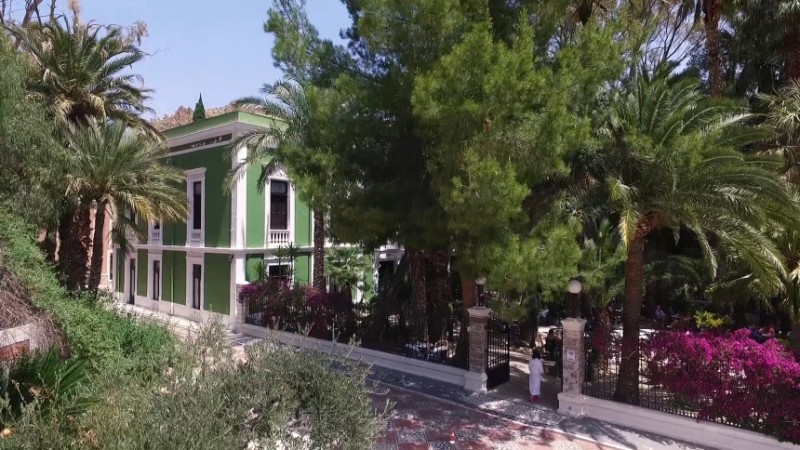
To be listed on the CAMPOSOL TODAY MAP please call +34 968 018 268.
The Casino of Archena in the Balneario thermal spa complex
The Casino was built as a place of recreation for well-off guests at the Balneario de Archena
The Casino of Archena is one of the collection of buildings which constitute the thermal spa complex of the Balneario de Archena, and was built in the 19th century as a place of leisure and culture for the wealthy and often aristocratic visitors who were drawn to the spa as a venue for medical treatment and for periods of rest and relaxation.
In its earlier years the Casino hosted a wide range of piano concerts and dances, and it is still used for occasional cultural events although its day-to-day function is as a cafeteria in the idyllic leafy setting on the banks of the River Segura.
The history of the Casino in Archena
Understandably the history of the Casino is inextricably linked with the history of the spa resort itself, although while the latter dates back at least until the time when Murcia was under the rule of the Roman Empire between the 3rd century BC and the 4th century AD, the former has its origins in the second half of the 19th century.
During the 19th century Spain at last shed the last vestiges of the feudal-style society which persisted in many places, and in Archena this consisted of the confiscation of the properties belonging to the religious and military Order of San Juan, which had effectively owned the town for centuries. This occurred in 1850, when the spa was acquired by the Vizconde de Rías, and the new owner soon set about converting the neglected facilities into a fashionable resort.(see History of Archena for further information)
Thus the Hotel Las Termas was built in 1862, to be followed by the Pabellón Levante and the church in 1878, and these developments led to Archena becoming the most popular resort of its kind in Spain (a situation which lasted until well into the 20th century). This was the backdrop to the construction of the Casino, which was completed in 1898 to provide a setting in which well-to-heel guests could read the newspaper, play billiards, listen to music and enjoy refreshments and the delights of informed conversation.
Originally gambling was also a part of daily life at the Casino, and in fact it is believed that the brother of the Vizconde de Rías, the Marqués de Corvera, lost his share in the Balneario over a game of cards here!
But the grandiosity of the Balenario faded after the death of the Vizconde de Rías in 1923, and serious damage was done to the Casino during the Civil War of 1936-39. This damage was not repaired until after industrialist Nicasio Pérez Galdó exercised an option to purchase the complex in 1950.
Further repairs were required in 1963 after a series of explosions on 1st September at munitions stores in the mountain of Cabezo del Tío Pio. These affected buildings within a 20-kilometre radius, and in the Casino this included doors and windows being blown out and cracks forming in the walls.
Now, though, the Casino sits serenely in its shaded location alongside the River Segura and is one of the most attractive spots in Murcia to escape the sunshine and wind down with a drink or a snack. At the same time it still fills a recreational role in the routine of guests at the three Baleario hotels, hosting concerts, card games, dominoes and other activities on a regular basis.
Features
The sculpted decoration of the Casino of Archena was the work of Manuel Castaños, who also contributed to the Hotel Las Termas, and is similar in many ways to that of the Casino of Murcia which the same artist completed in 1902.
The predominant style of the building is “neo-Renaissance” but with nuances of the modernism and eclectic tastes which were fashionable in Spain at the time of its construction. Less typical, though, is the fact that the ballroom is mainly decorated not with paintings but with a series of mirrors and other elements.
Click for further information about the Archena municipality
























